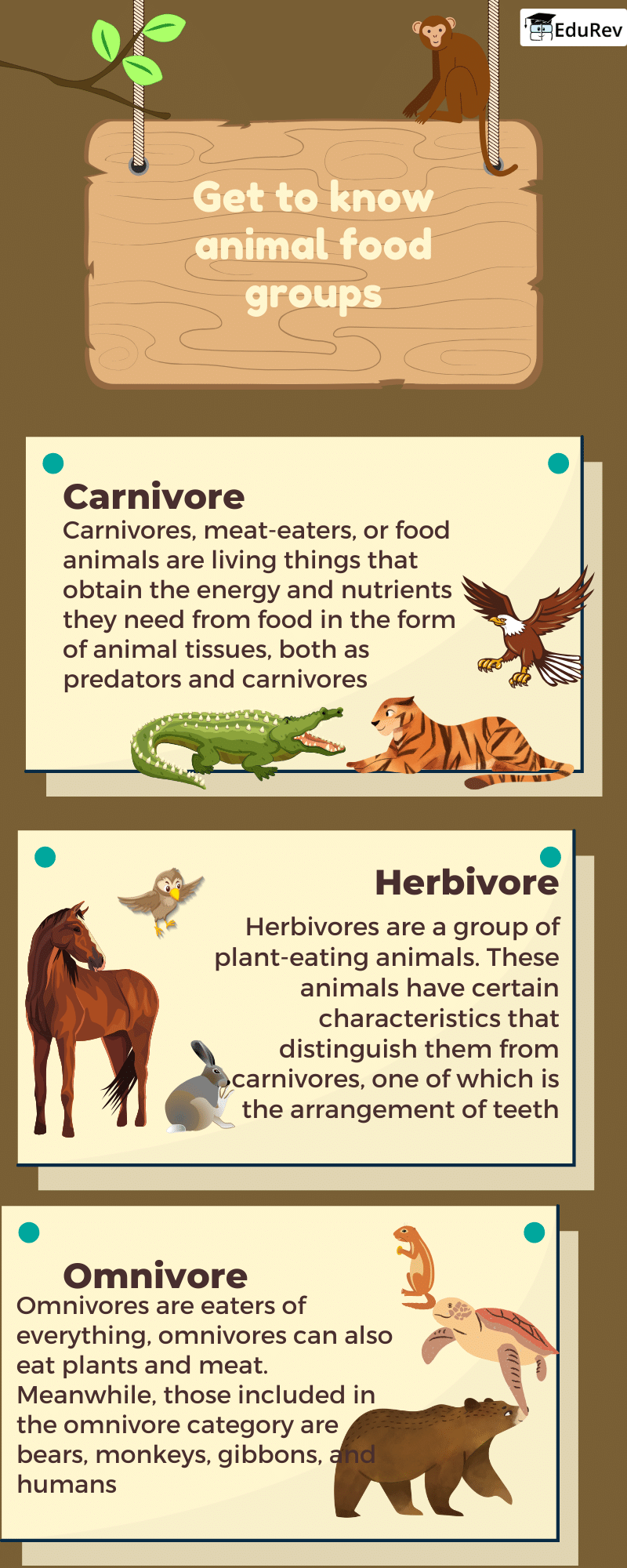Class 1 Exam > Class 1 Notes > EVS for Class 1 > Infographics: Animals food
Infographics: Animals food | EVS for Class 1 PDF Download

The document Infographics: Animals food | EVS for Class 1 is a part of the Class 1 Course EVS for Class 1.
All you need of Class 1 at this link: Class 1
|
33 videos|215 docs|44 tests
|
FAQs on Infographics: Animals food - EVS for Class 1
| 1. What types of food do different animals eat? |  |
Ans. Animals can be categorized based on their diets into three main types: herbivores, carnivores, and omnivores. Herbivores, like cows and rabbits, primarily eat plants and vegetation. Carnivores, such as lions and sharks, primarily consume other animals. Omnivores, like humans and bears, eat both plants and animals. Additionally, some animals have specialized diets, such as pandas, which mainly eat bamboo, or koalas, which primarily eat eucalyptus leaves.
| 2. How does an animal's diet affect its health and behavior? |  |
Ans. An animal's diet plays a crucial role in its overall health and behavior. Proper nutrition provides the necessary energy and nutrients for growth, reproduction, and survival. A balanced diet can prevent health issues such as obesity, malnutrition, and diseases. For example, animals with a diet lacking essential nutrients may exhibit lethargy, poor coat condition, or behavioral changes like aggression or withdrawal.
| 3. Can animals adapt their diets based on their environment? |  |
Ans. Yes, many animals are capable of adapting their diets based on the availability of food sources in their environment. For instance, some animals may switch from their usual diet to more readily available food during times of scarcity. For example, bears may eat berries in the summer and switch to fish in the fall when salmon runs occur. This adaptability is crucial for survival in changing habitats.
| 4. What are the consequences of feeding wild animals human food? |  |
Ans. Feeding wild animals human food can have negative consequences for both the animals and humans. Animals may become reliant on human food sources, leading to malnutrition as these foods often lack essential nutrients found in their natural diets. Additionally, it can alter their natural behaviors, making them more aggressive or less wary of humans, which can lead to dangerous encounters. In some cases, it can also result in wildlife becoming a nuisance, leading to conflicts with humans.
| 5. How do animal dietary needs change with age? |  |
Ans. As animals age, their dietary needs can change significantly. Young animals typically require diets high in protein and energy to support growth and development. As they reach adulthood, their nutritional needs may stabilize, focusing more on maintenance and fewer calories. Elderly animals often need diets that are easier to digest and lower in calories to prevent obesity and manage health issues. Adjustments in diet are essential to ensure that animals maintain optimal health throughout their life stages.
Related Searches
















